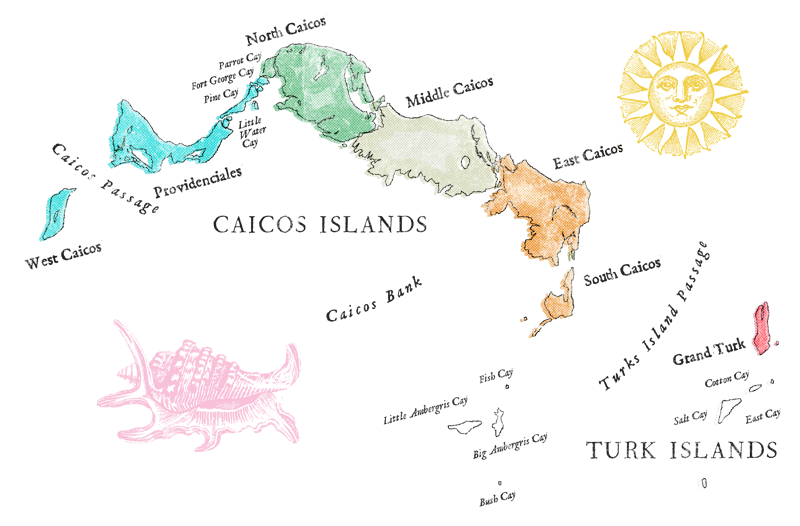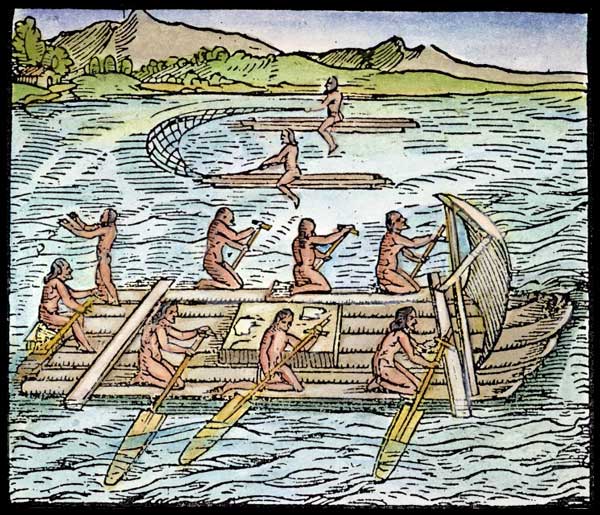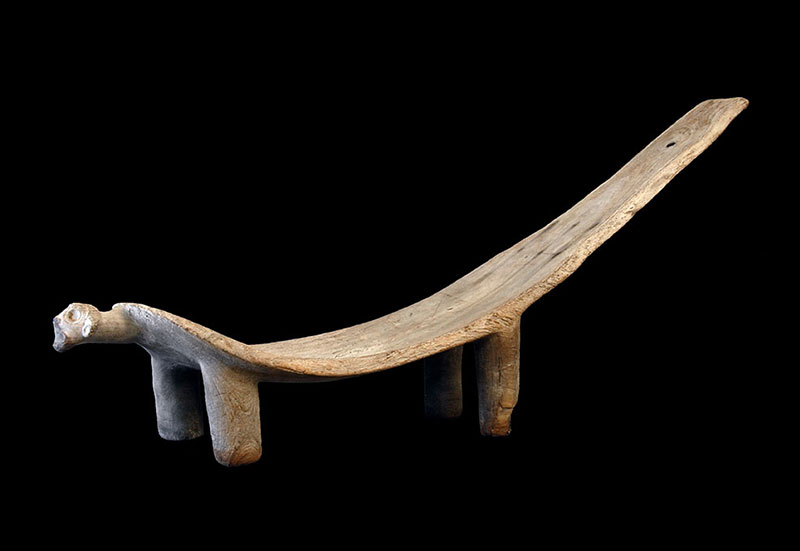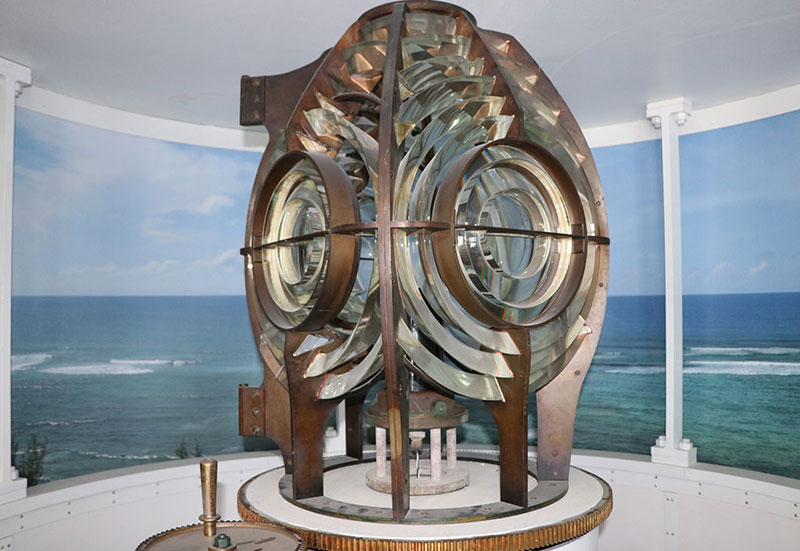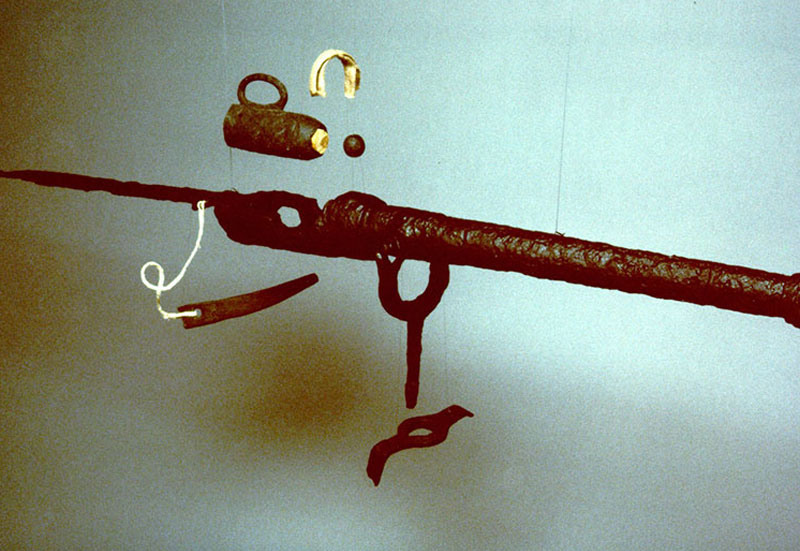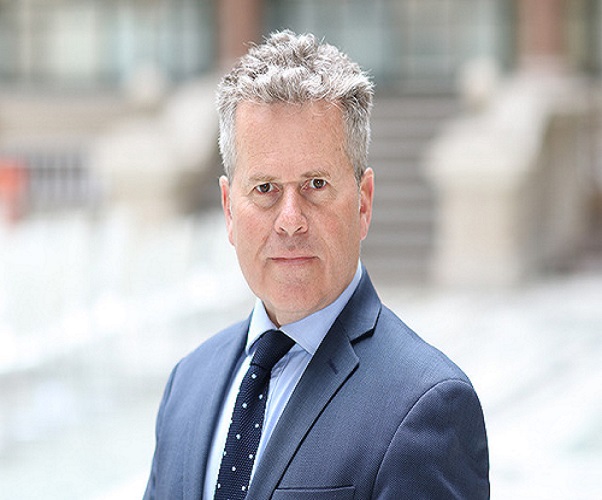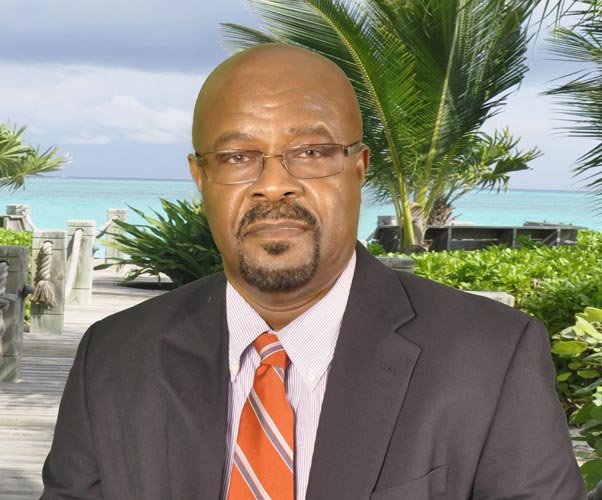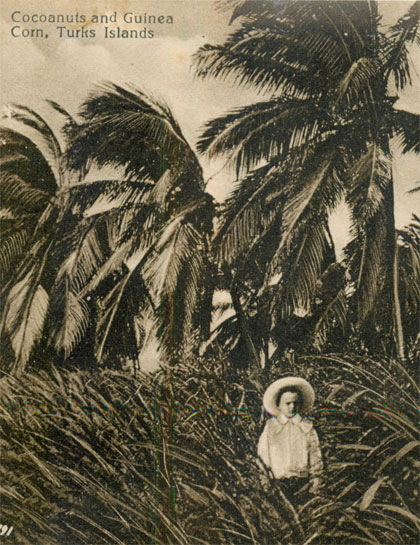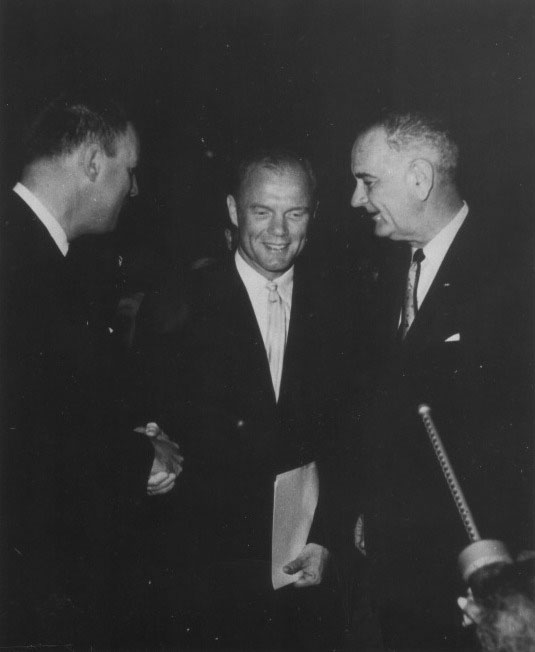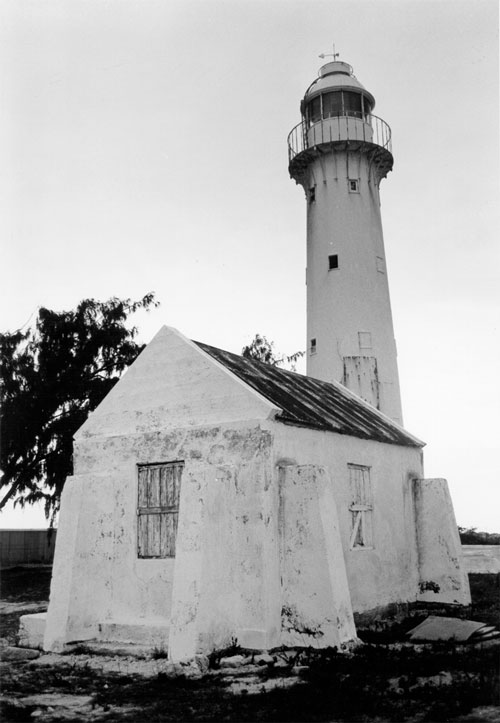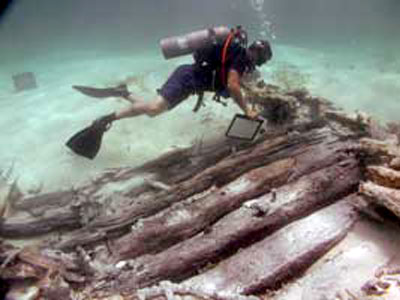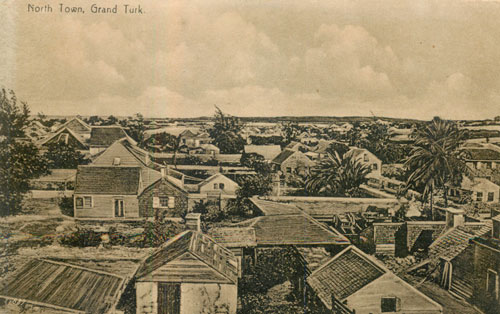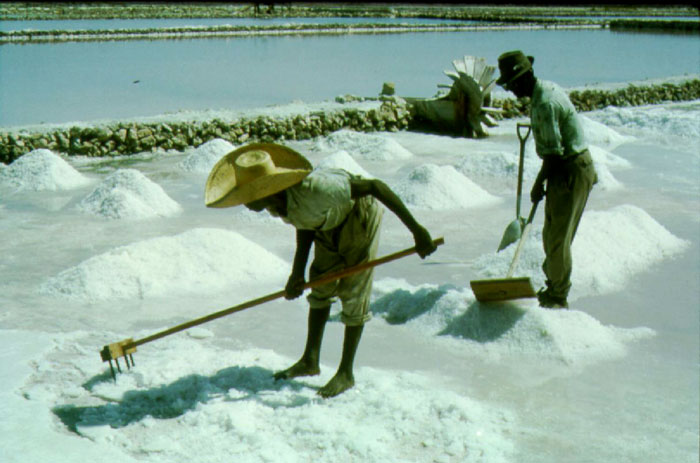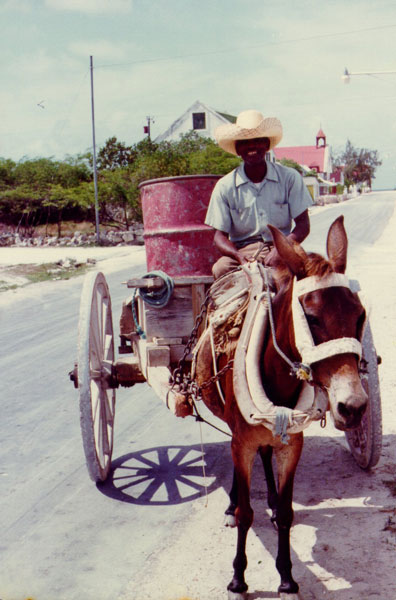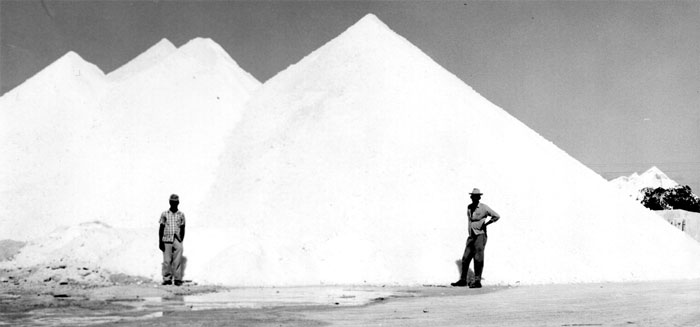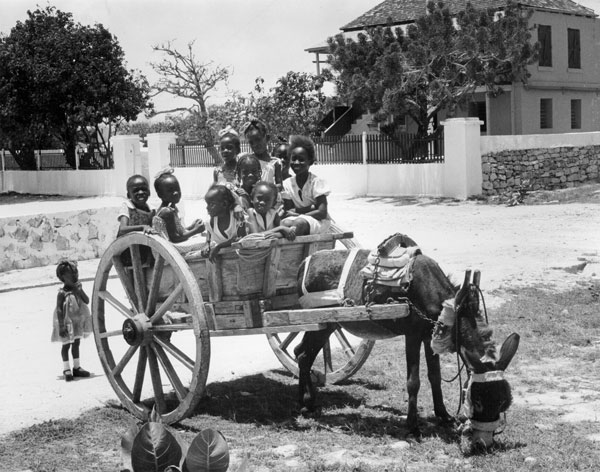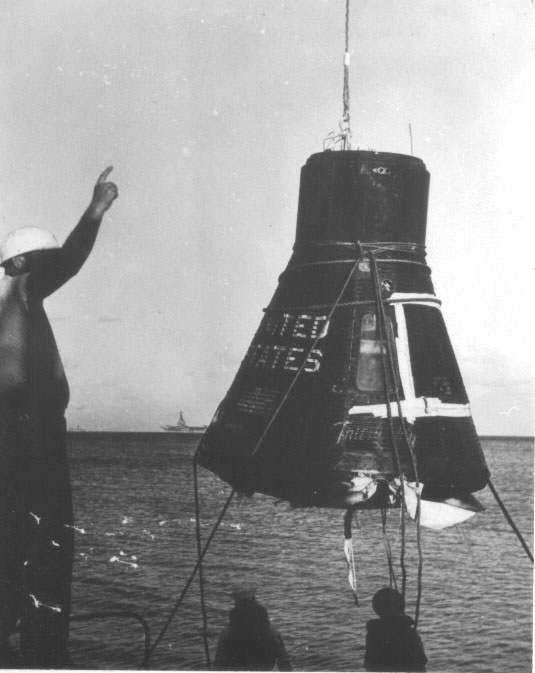Land, Sea and Air
The waters surrounding the Turks and Caicos Islands are filled with a diversity of marine life.
Sea Life
Throughout the centuries the sea has enabled the islanders to have a variety of staple foods as well as a source of income. Today it is the variety of wildlife and crystal clear waters that attract numerous divers.
It is the coral reefs that immediately catch the eye of visitors. Throughout the world coral reefs are becoming endangered due to pollution and damage from ships and divers. The coral provides a home for many forms of sea life and is an important part of the food chain, taking many centuries to build up.
The Islands offer two habitats for the coral. The leeward reef is protected from the strong winds and wave actions. This allows a wider variety of corals to survive in the shallow, calm water. On steep walls and in water below 82 feet (25 m) the coral colony grows into a plate-like structure. The windward reef contains branching corals, such as Elkhorn and Staghorn, which can endure the high wave energy of shallow water. Often broken by wave surges these fast-growing species can keep pace with the destructive force of the wind-driven waves.
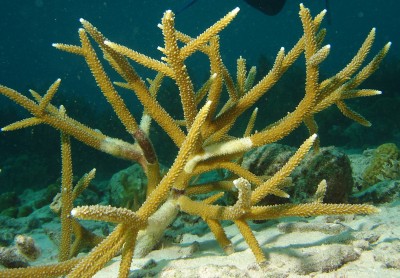
Typical staghorn coral
To help preserve the reefs around the Turks and Caicos Islands please do not touch them and remember it is illegal to collect coral.
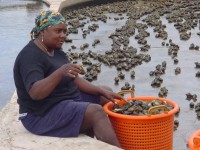
Conch farm in the TCI
The Island are famous for conch, a creature which is on the endangered species list but is readily available here and a delicacy in the local restaurants. They are farmed and restrictions on where and when wild conch can be collected help preserve the stocks. Conch shells can be found along the beaches and in the past the shells have been used for tools.
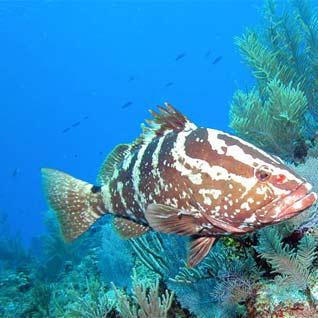
Typical Grouper in the TCI
Of course other creatures are caught for food and apart from the wide variety of fish, including Grouper and Parrot Fish, lobsters are also caught and a plant on South Caicos exports them. Unfortunately in the past other creatures have been caught for food and for use in making products. Some of these are now on the endangered species list. This includes sea turtles that were killed for their meat and shell, which was used to produce such items as combs and boxes.
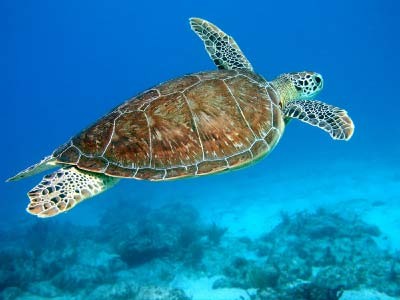
Endangered Sea Turtle
Land Life
The physical environment of the Turks and Caicos Islands leads to special communities of plants and animals. The climate is tropical and dry with average temperatures of 77°F (25°C) in the winter and 84°F (29°C) in the summer. Freshwater is scarce with an annual rainfall of between 30 and 60 inches (76 to 152 cm). With 350 days of sunshine each year rainwater is quickly reclaimed by the atmosphere through evaporation.
Bird Life
The differing habitats on the Islands allow a prolific range of bird life. Some are permanent residents while others are just passing through on migration. Birds that can be found here include hummingbirds, West Indian Osprey (pandion haliatus ridgway), Pearly-eyed Thrashers, Cuban Crow, Brown Pelican, West Indian Whistling Duck, Mangrove Cuckoos, Sooty Terns, Greater Flamingoes and a variety of Doves and Egrets.
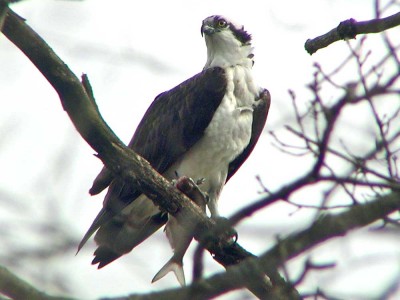
West Indian Osprey
Mammals
The Turks and Caicos Islands have few indigenous land mammals. The Hutia, a kind of guinea pig, is now believed to be extinct and the other rodents, rats and mice, appear to have come here on the ships. The only surviving native land mammals are bats found in the Caicos Islands. These include the Antillean Fruit-Eating Bat, Buffy Flower Bat, Leach’s Long-Tongued Bat and Waterhouse’s Big-eared Bats. It is worth noting no bats have been recorded in the Turks Islands. There are many introduced mammals including domestic pets such as cats and dogs, donkeys and horses.
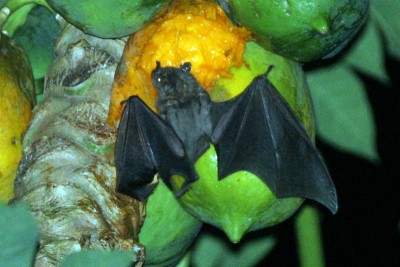
Antillean Fruit-Eating Bat
Insects
Of course all environments rely on insects as pollinators of plants, a food supply for the larger animals and as nature’s cleaners. On the Islands we can find moths (including the Witch Moth), Butterflies (including the Turks Island Leaf Butterfly)(for more information see Butterflies of the Turks & Caicos Islands), hornets and wasps.
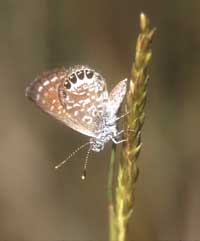
Turks Island Leaf Butterfly
Unfortunately one of the most common insects is the Mosquito: an essential diet for birds and reptiles, but a nuisance to larger mammals, including people. There are many types of this insect, especially on the Caicos Island and they are prevalent several weeks after a heavy rainfall or where there are standing areas of fresh or brackish water.
Reptiles
To keep some of the insects in check the small reptiles such as frogs, geckos and lizards are plentiful and can be seen on all of the islands. These include a subspecies of the Bark Anole, Anolis scriptus scriptus, a dark brown lizard with yellow spots on its back that prefers tree trunks, Curly-tailed lizard, House Gecko, Croaking Gecko and Dwarf Geckos. On the Caicos Islands there are also three species of snakes: the Pigmy Boa (Tropidophis greenwayi), Bahama Boa (Espicrates cgrtsigaster) and the rarely seen Worm Snake (Typhlops biminiensis).
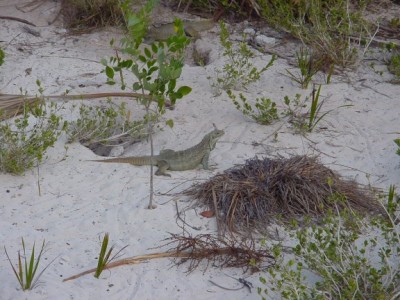
Iguanas on Little Water Cay are a protected species.
The most impressive of the reptiles though is the Iguana which can be found on several of the smaller cays, most notably Little Water Cay. The Turks and Caicos Rock Iguana (cyclura carinata) is an endangered species and is protected on these Islands. There are around 50 000 rock iguana on the Turks and Caicos Islands but they are threatened with extinction by inappropriate development and domestic animals. The iguana feeds on berries, leaves and fruit and lives in shallow burrows. It is simple to differentiate between the male and female: the female has a smooth ridge along their back whilst the male has spike like scales.
Plant Life
In 1998 the Museum opened a garden to show the variety of native plants as well as those brought in by some of the settlers. Many of the native plants have medicinal uses but now with modern drugs the knowledge of which plants are useful is being lost.
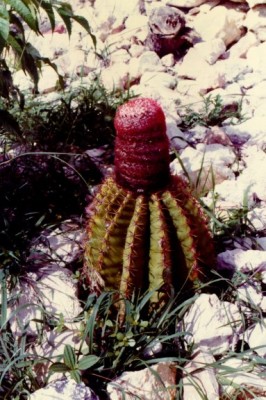
Turks Head Cactus
Native plants that can be found include the Turks Head cactus, sea-island cotton, a wide variety of orchids, native oak and mahogany (both used for boat building), mangroves, Lignum vitae, silver and green buttonwood, sea grape, wild yellow allamanda, acacia, sea oats and cordia.
There are also a wide range of plants that have been bought here such as sisal, aloe vera, coconut and wild pomegranate.
For more about plant life see the Museum Garden
